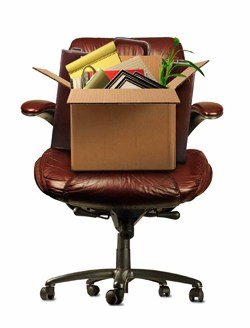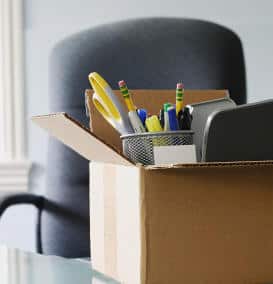Selecting new furniture for your office may not be the toughest task on your long list of things to do, but if you think it’s just a case of ordering the first things you come across that seem to fit the bill, you may be making a very expensive mistake. The furniture in an office can have a big impact on the way that everyone work s and getting it wrong could cause all sorts of problems in the future.
s and getting it wrong could cause all sorts of problems in the future.
As much as we may hate to admit it, we spend a lot of time in the office. Too many of us suffer in an office environment that is not well designed and we make do with whatever furniture there is. But those in the know are aware that carefully selected office furniture can make all the difference in our productivity and overall effectiveness.
So whether you’re refurbishing an entire office or just looking for a few items that will improve your working environment; what should you be thinking about? **
Have a clear plan
Given how expensive new furniture can be, deciding to make the investment is not something that should be done without thorough planning. Carefully consider the needs of every employee and how each new piece of furniture will be utilised; involving your employees in the whole purchasing process is useful for helping to ensure you get exactly what’s needed.
Practicality over Style
It may look stylish and “cutting edge” but will it stand the test of time? Is it actually functional? The general rule is that furniture with a classic, timeless appeal will give the best long-term value. This also applies to whether the furniture is actually comfortable to use. You may not think it, but office furniture can have a great impact on the productivity of your staff. Not just because uncomfortable furniture will mean they are less likely to be able to concentrate but there are also issues of practicality. Therefore, it’s a good idea to consider such things as contoured chairs, adjustable seats and general ergonomic design, to ensure that you maximise comfort and minimise work-related injuries. It’s also important to think about productivity when selecting storage options. If it’s easy to store things and access them when needed, then less time will be wasted searching through cupboards and cabinets to find what you are looking for.
Finally, spend some time on selecting finishes and fabrics. If cleanliness is paramount, wipe clean surfaces are probably the best choice. It almost goes without saying that fabrics that are easy to clean are more hygienic and are best suited to high use items.
Forward Planning
Whether you’re starting a new business or adding furniture due to expansion, you should take into account how every piece will fit into your current and future environment.
You should also ensure that the range you choose from is not due to be discontinued or phased out. Even if you can only afford a few chairs and desks or aren’t ready to buy a big conference table just yet, at least you can be confident that you can add the relevant items you need at a later date.
You also need to consider how adaptable your new furniture is. Desks need to have enough space to accommodate laptops, monitors, printers, PDAs, mobile phone chargers, lighting, etc. So when making your purchase, it’s important to think about what space and storage you may need a few years from now, i.e. Does the furniture have the ability to hide cords? Will your conference room have a big enough table?
Flexibility is often Key
It’s a good idea to select furniture that can be easily moved and reconfigured as new needs arise. This will give you the flexibility to change your floor plan as necessary.
Some table design can be adjustable for height or can have more than one level. Some can be folded or expanded as the need arises. With wireless networks and technology becoming more popular, employees may not even need specific workspaces. In some offices, employers are electing to put wheels on desks with power outlets on the floor. This encourages employees to move their desks around in the general space, depending on whether they’re working alone, or as part of a team.
Is it up to the task?
If everyone had the same build or body type, buying new office furniture would be a whole lot easier. But that’s not the real world. Instead, you need to be able to comfortably accommodate individuals of all shapes and sizes. For example, a desk chair that’s only rated for use by individuals weighing up to 250 pounds can lead to problems if you have employees who weigh more than that. Choosing an incorrectly rated item can result in costly damage to the chair, and more importantly, injury to the person sitting in it. Any savings you would realise by purchasing a lower-rated chair would be far exceeded by the cost of your liability to the person who was injured.
Choosing Value over Price
Everyone loves a bargain, but the cheapest is definitely not always the best. Price be should not be your only guide when buying furniture. A piece of new office furniture may look good, but if it’s poor quality, it won’t last very long and will soon need replacement, incurring unnecessary costs. You should always consider the cost of purchase over the expected life of the furniture. For example, a chair that’s designed for occasional use will generally cost less than one that’s designed to withstand
heavy wear and tear. While it may be tempting to purchase the lower-priced chair, that would be a mistake if the chair will receive heavy use. Repairs and replacements could easily outweigh any initial savings and could even make the product more expensive in the long run. There may be an occasion, however, when you have to buy and inexpensive item to “make do” in an emergency. In that case, you should always consider this to be short-term measure and factor in the cost of a more suitable purchase at a later date.
First Impressions
Your type of business will also play a large part in determining the style and type of new furniture you decide to buy. For example, more traditional designs are generally more suited to financial and legal offices. Creative professions tend to go for something more modern or minimalist. It’s also a question of what your clients expect to see when they come to your offices. Your office furniture should be a reflection of your brand and you should choose your style accordingly.
In short, the furniture you pick for your enterprise must match the business, your own style and should suit the function for which it is acquired. By shopping carefully and wisely, you can get the right furniture at the right price. We understand that it’s not always an easy task, which is why we pride ourselves on offering a bespoke service to all our clients, using our skill and expertise to ensure they all get exactly what’s right for them, helping them create a space that’s great to work in.
Buying office furniture requires practical considerations that go far beyond aesthetics. The comfort and safety of your employees must be factored into every decision and by avoiding a few common blunders, we can ensure that the furniture you select will be one of the best investments your business makes, leading to improved employee satisfaction, productivity and, therefore, profit for your business.
** Of course all Office Furniture and seating must comply with current Health & Safety Legislation. For advice contact
us on richard.clarke@randaoffice.co.uk or go to http://www.hse.gov.uk**
 recently delivered to me and the service you provided. When we initially spoke I specified that I wanted a certain size and colour of desk to perfectly fit the room and match the other furniture within my home office. Although not a common color you sourced a fantastic match which I extremely pleased about and its fits perfectly into the limited space. Your team who delivered the desk were great. They arrived when you said they would and then assembled the desk with no hassle, positioned it where I wanted it, and were in and out within 20 minutes.
recently delivered to me and the service you provided. When we initially spoke I specified that I wanted a certain size and colour of desk to perfectly fit the room and match the other furniture within my home office. Although not a common color you sourced a fantastic match which I extremely pleased about and its fits perfectly into the limited space. Your team who delivered the desk were great. They arrived when you said they would and then assembled the desk with no hassle, positioned it where I wanted it, and were in and out within 20 minutes.

 nal workspaces and an increase in flexible working. Internal meetings have generally become less formal, increasing the need for breakout/social areas and reducing the use of boardroom space.
nal workspaces and an increase in flexible working. Internal meetings have generally become less formal, increasing the need for breakout/social areas and reducing the use of boardroom space.



 With commercial rents still high and office budgets being tighter than ever, more and more companies are opting to implement flexible working conditions in their offices. This has also been prompted by an increase in flexible hours and part-time work and, due to improved technology, the ability of many staff to work remotely from their own home or other space away from the main office itself.
With commercial rents still high and office budgets being tighter than ever, more and more companies are opting to implement flexible working conditions in their offices. This has also been prompted by an increase in flexible hours and part-time work and, due to improved technology, the ability of many staff to work remotely from their own home or other space away from the main office itself. working after 26 weeks employment service. For many employers, this will come as good news for the simple reason that, long term, it will enable them to potentially occupy less office space and therefore reduce office overheads as a result.
working after 26 weeks employment service. For many employers, this will come as good news for the simple reason that, long term, it will enable them to potentially occupy less office space and therefore reduce office overheads as a result. s and getting it wrong could cause all sorts of problems in the future.
s and getting it wrong could cause all sorts of problems in the future. Just like moving house, moving your business can be one of the most stressful things you will ever do. There are so many things to take into account and it’s not something to enter into without a great deal of thought and planning.
Just like moving house, moving your business can be one of the most stressful things you will ever do. There are so many things to take into account and it’s not something to enter into without a great deal of thought and planning.